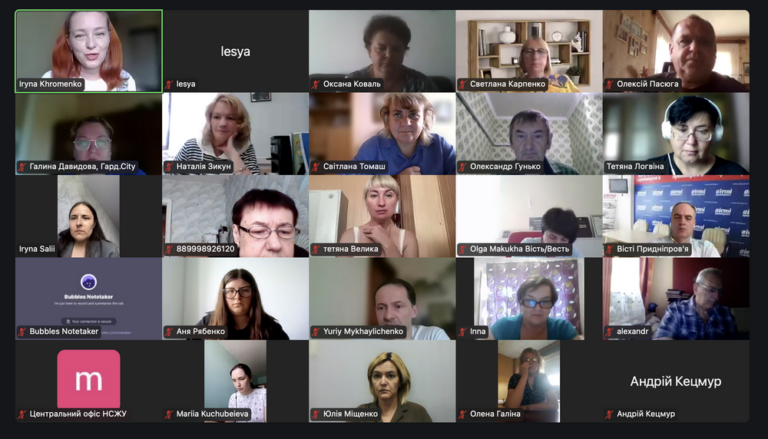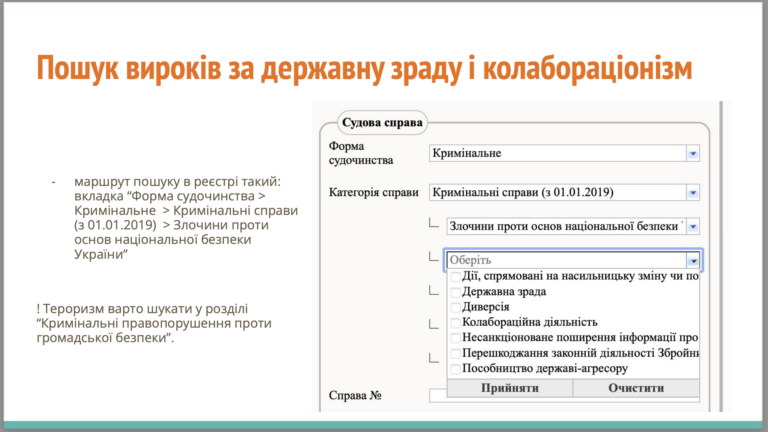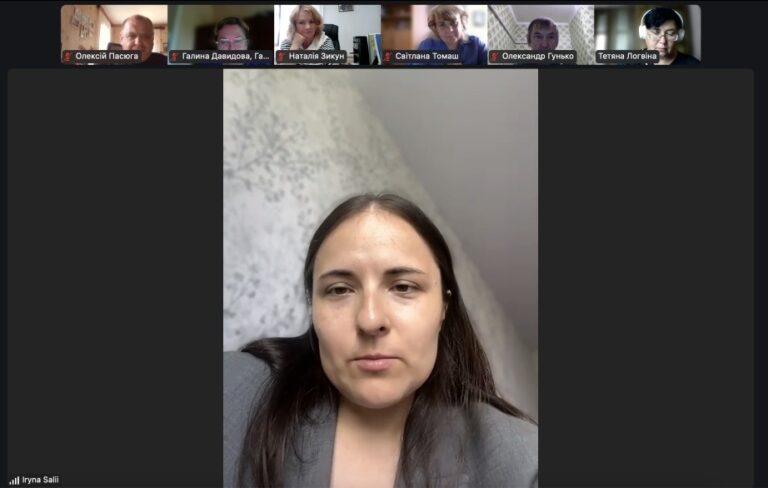The court register is a resource that enables journalists to find information without leaving their home or the newsroom. Based on this information alone, a media person can create a story or use it as a starting point to “dig” further. The founder of the online publication Court Reporter, Iryna Salii, told the participants in the National Union of Journalists of Ukraine’s (NUJU) webinar about how to properly work with court registers, how to search for and decipher information.
“I have been working with the court register for more than 10 years and have not been disappointed in it. This is a unique source of information. Very few countries in the world can boast such openness. As of August 11, 2025, the register has more than 127 million court rulings in open access,” said Iryna Salii.
The media person shared practical tools for working with the resource reyestr.court.gov.ua.
The webinar participants, in particular, learned what information is not publicly available, who has full access to the register, why information about participants is not displayed, what search methods can be used, etc.

In particular, when working on the portal, you can use the following search methods:
- search by context, that is, by a fragment of a court decision, a specific phrase, or the name of an organization. If you are looking for an exact phrase or name, then put these words in quotes.
- search by extended parameters – the region of the court, the name of the court, the judge’s surname (often not published during wartime), the category of the proceedings, the case number, search by calendar, etc.
- search by the number of the criminal proceedings (you need to enter it in the line Search by context).
The media person also gave a kind of “instructions” for the webinar participants on how to search for sentences “for treason and collaborationism,” “for war crimes,” and “for corruption.”
“Even before the full-scale invasion, I practiced such materials – about treason sentences, which were passed in 2021. But if in 2019-2021 there were 10 such sentences for the whole year, then since 2022, this has been one of the most “trending” articles of the Criminal Code. Now there are many more of them per week. But regional media may be interested in such cases in their region,” added Iryna Salii.

The webinar participants noted: the topic is complex, because it requires, first of all, resources and time, but it is interesting.
“The Vest’ newspaper constantly runs a column, Criminal Cases, which we have on the second page. We also write about the most high-profile cases of Chernihiv and suburban communities. Therefore, the register is a site of constant visit for us. But Iryna told me something that I did not know before. For example, there was a situation when it was necessary to add a figure for how many local courts had already considered cases of treason. The prosecutor’s office replied that they did not count. Vest’s request was forwarded to the district courts! Everyone answered! After the webinar, I realized that I could count the number of cases myself, which I will do in the future. It is also very inspiring when you communicate with an intelligent and passionate journalist. This is an investment in the growth and strengthening of independent media,” shared Olha Makuha, the editor of the Vest newspaper.

Some of the tips for journalists based on the materials of Iryna Salii‘s webinar:
- Pay attention to the criminal case number. It is assigned at the stage of the pre-trial investigation. Since the investigating judge gives permission for some investigative actions, such as searches and detentions, information about this appears in the court register. So, by searching for this number, you can, to some extent, reconstruct the actions of the investigators.
- After the criminal case materials are transferred to the court, the case is assigned a number. It is worth tracking this number in the register. The case number also contains information about the year the case was transferred to the court, which is the last two digits. Thus, you can track how long the investigation lasted.
- Suppose the names of the participants in the court cases are not in the materials. In that case, you can come to the court and take a picture of the court hearing schedule on the judge’s door or the bulletin board.
- To hear more information, including about witnesses and other persons involved in the case, it is worth attending the court hearing if it is open. This also gives you the opportunity to directly ask the participants if they do not mind making their names public. In addition, while at the hearing, a journalist can “see” the future material in a completely different way than when preparing it, based on the court’s decision.
- Expert comments are not always appropriate. The “experts” in a case are, first of all, its participants. Sometimes journalists take comments from lawyers who are not criminologists and do not deal with such cases. Here, their expertise will be quite questionable.
- The best materials come out when you work on a topic for a long time.
- An interesting topic is found by those who search.
“I very rarely manage to work with a topic that is sent “from the outside” or I see something in the materials of law enforcement agencies. As a rule, this is systematic monitoring. And you, as a professional hunter, constantly monitor cases. Over time, you will develop a certain “feeling,” and you will already know what to pay attention to and “where the dog is buried,” suggests Iryna Salii.
The webinar took place within the framework of the project funded by the Embassy of the Republic of Lithuania in Ukraine within the framework of the Development Cooperation and Democracy Promotion Programme.


 THE NATIONAL UNION OF
JOURNALISTS OF UKRAINE
THE NATIONAL UNION OF
JOURNALISTS OF UKRAINE
















Discussion about this post